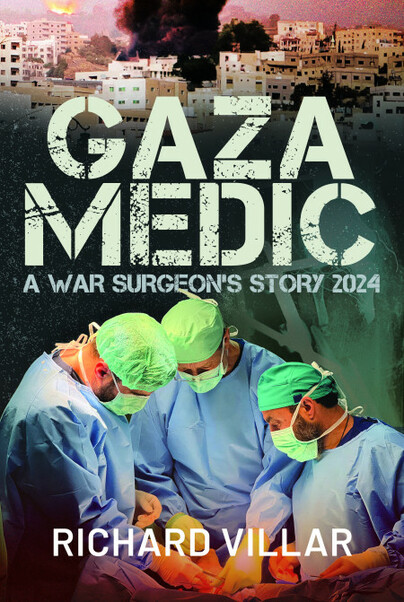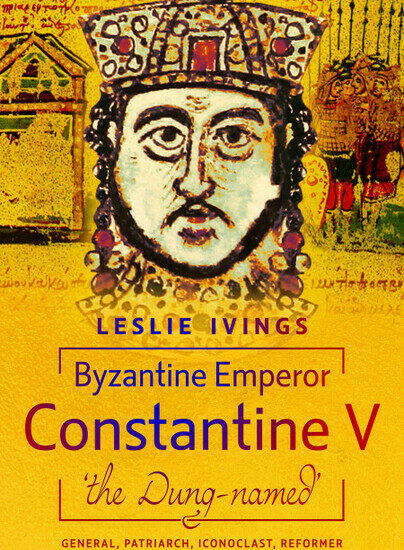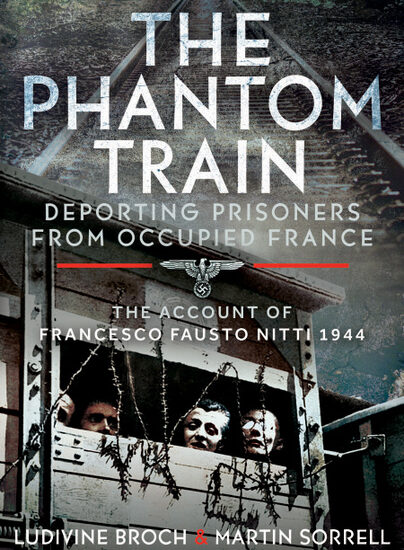Gaza – a War Surgeon’s Story
A guest post from Richard Villar, Consultant Surgeon.
When I completed my book Gaza Medic in October 2024, I believed I had written a timely, essential account of a devastating conflict, one that would shed light on the harrowing experiences of Gaza’s people, and the immense moral cost of silence. At the time of writing, the Israeli bombardment had already displaced most of the population, destroyed medical infrastructure, and caused countless civilian deaths. Yet I underestimated how quickly and how far the situation would deteriorate in the months that followed.
These words are not merely an update; they are a requiem, a record of horrors that have intensified since my original manuscript, and an account of the personal and professional backlash I have faced for daring to tell the truth. My words are a reaffirmation of solidarity with Gaza’s medical professionals and civilian population, and a testament to the growing but still too-muted global recognition of what is happening.
The Spiral into Famine
Since late 2024, famine in Gaza has shifted from looming threat to lived reality. The United Nations, Save the Children, and the World Food Programme have all declared the situation one of catastrophic hunger. Meanwhile, the initial, faltering steps of the so-called Gaza Humanitarian Foundation appear to have strayed outside the humanitarian principles of humanity, impartiality, independence, and neutrality. Aid convoys are routinely blocked or delayed. Crop lands have been bulldozed or bombed. Fishermen are prohibited from going to sea. Basic calorific intake has fallen below survival thresholds in many areas, and the already-stressed hospitals are now admitting children with visible signs of starvation – distended abdomens, skeletal limbs, listless gazes.
When I returned from Gaza, I described the signs of early malnutrition. Now, in updates I receive from colleagues in Khan Younis. Rafah, and Deir al-Balah, the term “famine” is no longer clinical – it is a daily descriptor. Breastfeeding mothers have no milk. Babies are fed diluted formula or tea. Elderly people are collapsing in the streets. Malnourishment may now claim more lives than active bombardment.
Obstruction of Humanitarian Aid
The deliberate throttling of aid is one of the starkest illustrations of collective punishment. Convoys are turned back or sit idle at border crossings for days. Medical supplies are often denied entry under the pretext that they might be dual-use items. Oxygen cylinders, gas-powered generators, tents (thanks to their metal poles), and medical kits (because they included scalpels) have been among the items turned back. Insulin has expired on trucks. Antibiotics are being hoarded like gold. The UN has reported that less than 10% of needed supplies enter Gaza.
Aid obstruction is not merely negligence, it appears to be policy. One that violates international humanitarian law and yet persists.
Reproductive Health: Miscarriages and Birth Abnormalities
One of the least publicised but most heartbreaking outcomes of this conflict has been the profound toll on reproductive health. I have seen clinical records showing that miscarriage rates have more than tripled since the bombardment began. Expectant mothers are exposed to extreme stress, malnutrition, dehydration, and untreated infections – all strong contributors to miscarriage. Antenatal care is barely functional. Many women deliver unattended.
In Rafah, a midwife reported to me a string of stillbirths that she believed were linked to toxic exposure from munitions. There is increasing concern, echoed in emerging studies, about a spike in congenital abnormalities. These include neural tube defects, limb malformations, and cardiac anomalies. There is little capacity to study this rigorously, but the pattern is clear.
Cancer and the Long Shadow of War
Cancer rates have always been elevated in Gaza. The blockade, environmental degradation, stress, and lack of screening play roles. Clinicians have reported rising cases of paediatric leukaemia and lymphoma, as well as breast and colorectal cancers in younger adults. There is concern that the use of toxic munitions – including possible depleted uranium – may be increasing the environmental carcinogenic load.
Hospitals lack pathology laboratories, chemotherapy, radiotherapy, or consistent pain control. Imagine diagnosing cancer with no means of treatment. This is the cruel paradox Gaza’s doctors now face.
Ethnic Cleansing by Increment
What is unfolding in Gaza appears to meet the legal and moral definitions of ethnic cleansing. A systematic effort is being made to render the land uninhabitable. The destruction of homes, hospitals, universities, bakeries, and water treatment plants is not incidental – it is strategic. The forced displacement of 1.7 million people, many multiple times, into smaller and smaller enclaves with little chance of return, looks to be ethnic cleansing by increment.
The language used by officials – comparing Gazans to animals, denying them national identity, invoking biblical extermination narratives – has been well-documented. The evidence is not abstract. It is etched in rubble and in refugee camps.
Depleted Uranium and White Phosphorus
Doctors in Gaza have long suspected that the weapons used contain toxic heavy metals. In Fallujah, Iraq, research after US attacks showed a direct correlation between use of depleted uranium and birth defects. Anecdotally, I am hearing similar patterns in Gaza. Children born with no limbs. Organs failing within weeks of birth.
White phosphorus is likely being used, despite official denials. I certainly treated burns in southern Lebanon – another recent mission – with the tell-tale character and risk of spontaneous re-ignition from phosphorus injuries. International conventions prohibit its use in civilian areas. But these conventions are ignored. Human Rights Watch, Amnesty International, and other NGOs have documented its use in densely populated areas.
Cluster Munitions – a New Scourge
In recent weeks, I have begun to hear troubling reports from within Gaza about the use of cluster munitions. These weapons, notorious for their indiscriminate nature, release dozens or even hundreds of submunitions over a wide area. Some explode on impact, but many do not. They lie in wait for the unsuspecting – often children – drawn by their toy-like appearance. They are designed for maximum area denial, but it is now said they are being dropped in one of Earth’s most densely populated civilian regions.
Unlike conventional bombs, which kill once, cluster munitions create long-term killing fields. I have witnessed videos and medical records showing injuries consistent with cluster munitions – multiple puncture wounds, embedded fragments, devastating blast trauma. The use of explosive weapons in Gaza has resulted in numerous injuries among children. These are injuries that can lead to lifelong disability, including amputations and loss of vision. There are thousands of unexploded bombs in Gaza. At least 10% of the explosives dropped simply do not detonate.
Neither Israel nor the United States is a signatory to the 2008 Convention on Cluster Munitions. As of 2024, more than 100 countries had both signed and ratified the Convention. That includes the United Kingdom. Regardless of this Convention, it seems that the world watches while Gaza is turned into a testing ground for banned and controversial weapons.
Targeting of Civilians and Children
I return again and again to this. The myth of precision warfare is exactly that – a myth. In Gaza, children are not collateral damage. They are targets. More children have been killed in Gaza in the past year than in all other global conflicts combined. When an airstrike levels a school or a UN shelter, when a family of 20 is wiped out in a single missile strike, it is hard to view this as anything but intentional.
The killing of civilians has become routine. Names are replaced by casualty counts. Families are erased from the registry. Children are buried in mass graves. This is not a military campaign. It is a massacre.
The Coming Medical Catastrophe
What happens after the bombs stop? A catastrophe. Thousands of amputees with no prosthetics. Children with PTSD and no therapists. Pregnant women with no prenatal care. Diabetics with no insulin. People with fractures that never healed. Gunshot wounds that festered into septic arthritis. Two million operations lie ahead, maybe more. That is not an unrealistic assessment.
Up to 12,000 casualties are awaiting evacuation from Gaza right now. It is anyone’s guess how many will make it to competent medical care, wherever that may be found. I evacuated one patient from Gaza. She made it to Cairo. They were unable to handle her condition, so sent her 8000 kilometres eastwards to Kuala Lumpur. There, she received surgery but, even now, is not cured. It may sound grand to evacuate a patient from a war zone, but it presumes those who accept the patient know what to do with them. That is not always assured.
This burden will last for decades. It will overwhelm any existing health system. It will also likely be forgotten by the world once headlines fade.
Infections and the Hazards of Rubble
Infection rates are soaring. Antibiotic resistance is rampant. Wound infections, respiratory illnesses, dysentery, hepatitis, polio, and TB are on the rise. Children play in rubble laced with asbestos. Surgical teams operate without sterile gloves.
Bombed-out buildings contain dangerous materials. Asbestos fibres, heavy metals, fuel residues. There is no way to manage this level of contamination. Gaza is becoming a toxic wasteland. The IDF troops are also in danger. They search a collapsed building after a missile has done its deed, they kick up dirt and dust, inhale the filth, and in 20 years’ time, maybe more, their tumour can appear, their liver fails, their kidneys rot. Gaza is filled with danger.
I asked a colleague the other day what he might tell an IDF soldier. “Use contraception for the next three years,” he replied. I suspect he was right.
Silencing of Witnesses
They call it hasbara. Since publishing Gaza Medic, I have found myself on the receiving end of what I suspect is a coordinated campaign of discreditation. The Raworths Harrogate Literary Festival disinvited me, citing poor ticket sales. I do not believe a word. BBC interviews were cancelled even after the recordings had been made. I was told not to say anything political. Presentations were quietly made difficult, while lecture theatres suddenly became overbooked and had to be changed.
This is not paranoia. It is a pattern. I have given more than a thousand lectures in lands right around the world over many decades. I know what is normal and what might be unexpected. Never has it been as I experience it now. Hasbara is subtle and effective. Speakers can be labelled as extremists, biased, unbalanced, even anti-Semitic. Pull the other one. Some of my best friends are Jews. Plenty are also Muslim. Venues grow nervous. Editors hesitate. Invitations evaporate. Every medic I know who has returned from Gaza since this war started has had a similar experience.
Silencing is not always dramatic. It is often quiet. But it is felt deeply.
Despite It All
Despite these challenges, I have continued to speak, to write, to collaborate. Two academic papers have now been published and presented in Geneva. A third is in progress. I am in regular contact with colleagues in Gaza, who will often call or message me between surgeries, as bombs fall nearby.
And there is hope. There is now, at last, the beginning of a shift in public opinion. David Lammy’s recent statement in the House of Commons was the strongest yet from a British official. He condemned the siege, denounced the war, and called for accountability. Similar voices are emerging in the US, Canada, and across Europe.
When Gaza Medic first appeared, few wanted to listen. Now, at least, more are willing to hear. And from hearing, perhaps, comes action.
But it will be too late for many.
A Final Word
These words are not closure. There can be no closure while Gaza bleeds. But it is a continuation – an insistence that we must bear witness, and we must not be silent.
For the dead. For the living. For those yet unborn. We owe them our voice.
We owe them the truth. We owe them plenty.
***
All views expressed in this article are Richard Villar’s. You, the reader, must decide if you agree.

Gaza Medic is available to order here.

